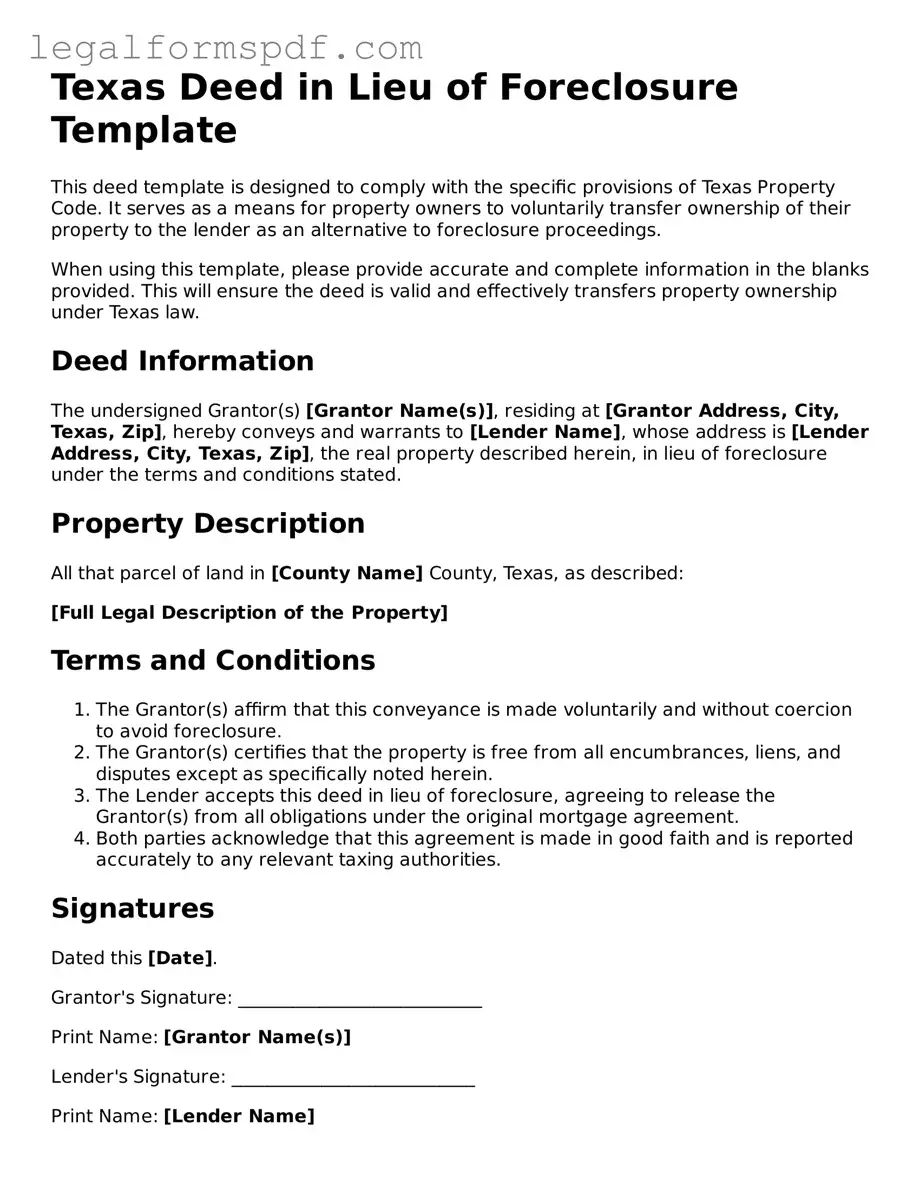Texas Deed in Lieu of Foreclosure Template
This deed template is designed to comply with the specific provisions of Texas Property Code. It serves as a means for property owners to voluntarily transfer ownership of their property to the lender as an alternative to foreclosure proceedings.
When using this template, please provide accurate and complete information in the blanks provided. This will ensure the deed is valid and effectively transfers property ownership under Texas law.
Deed Information
The undersigned Grantor(s) [Grantor Name(s)], residing at [Grantor Address, City, Texas, Zip], hereby conveys and warrants to [Lender Name], whose address is [Lender Address, City, Texas, Zip], the real property described herein, in lieu of foreclosure under the terms and conditions stated.
Property Description
All that parcel of land in [County Name] County, Texas, as described:
[Full Legal Description of the Property]
Terms and Conditions
- The Grantor(s) affirm that this conveyance is made voluntarily and without coercion to avoid foreclosure.
- The Grantor(s) certifies that the property is free from all encumbrances, liens, and disputes except as specifically noted herein.
- The Lender accepts this deed in lieu of foreclosure, agreeing to release the Grantor(s) from all obligations under the original mortgage agreement.
- Both parties acknowledge that this agreement is made in good faith and is reported accurately to any relevant taxing authorities.
Signatures
Dated this [Date].
Grantor's Signature: ___________________________
Print Name: [Grantor Name(s)]
Lender's Signature: ___________________________
Print Name: [Lender Name]
State of Texas
County of [County Name]
On [Date], before me, [Notary Name], a notary public in and for said state, personally appeared [Grantor Name(s)], personally known to me (or proved to me on the basis of satisfactory evidence) to be the person(s) whose name(s) is/are subscribed to the within instrument and acknowledged to me that he/she/they executed the same in his/her/their authorized capacity(ies), and that by his/her/their signature(s) on the instrument, the person(s), or the entity upon behalf of which the person(s) acted, executed the instrument.
WITNESS my hand and official seal.
Signature of Notary: ___________________________
Notary Public for the State of Texas
My Commission Expires: [Expiration Date]
